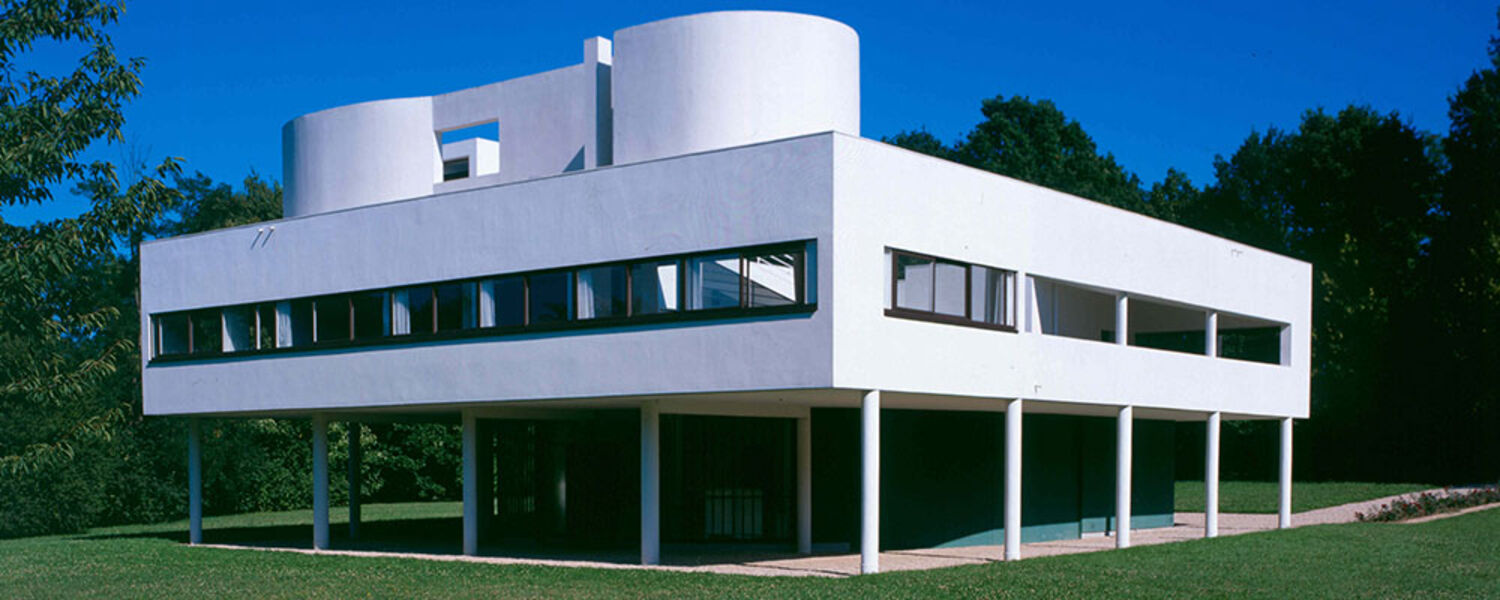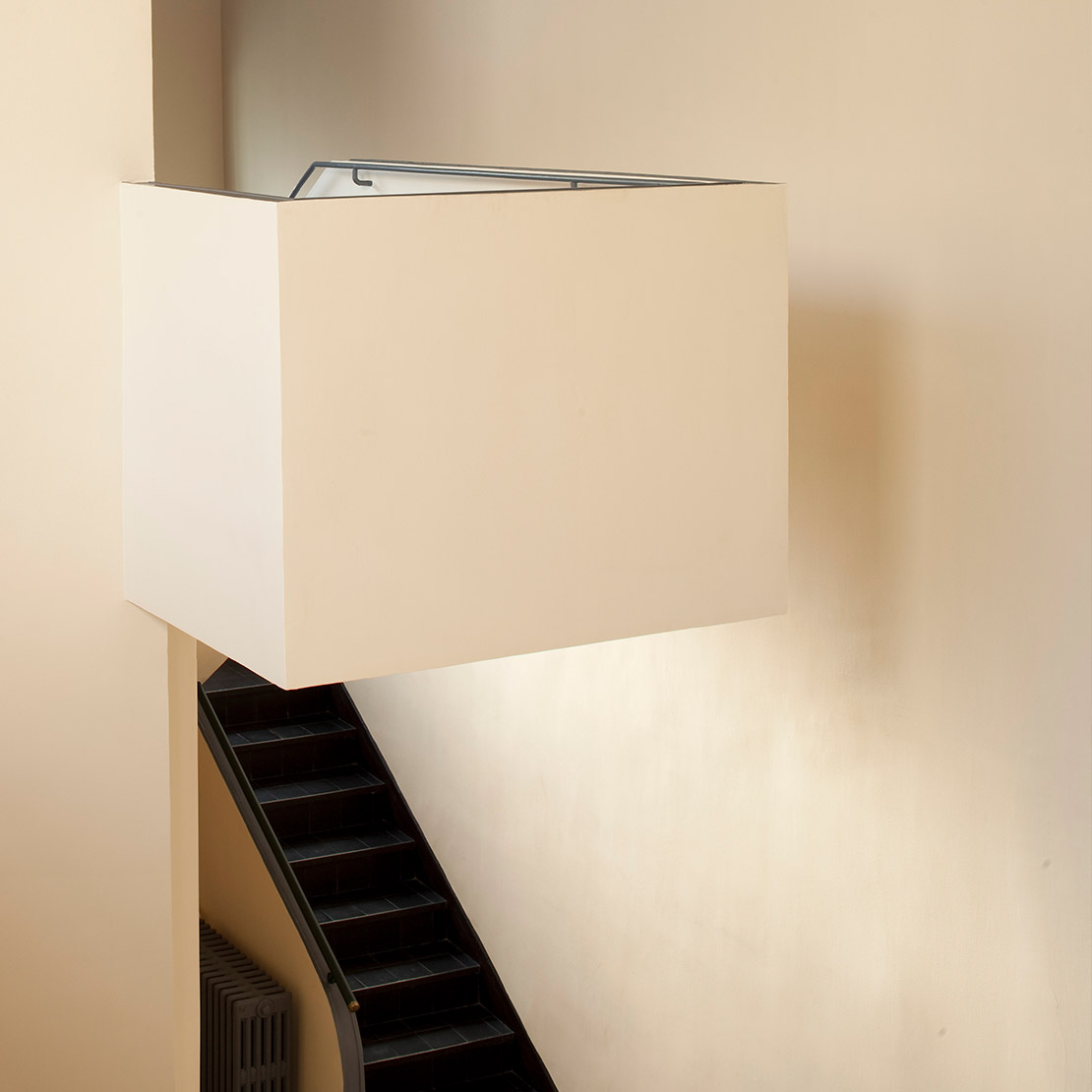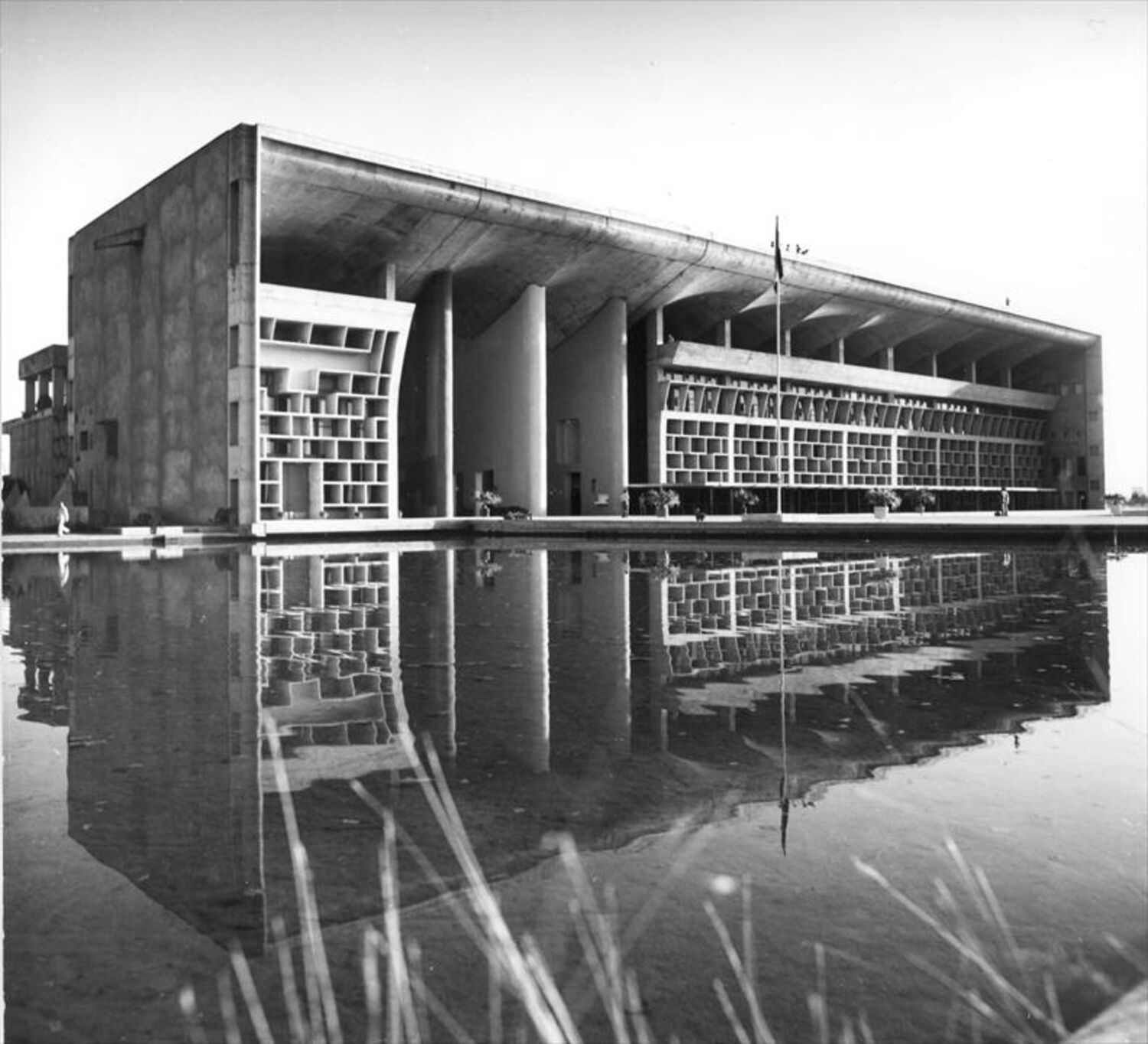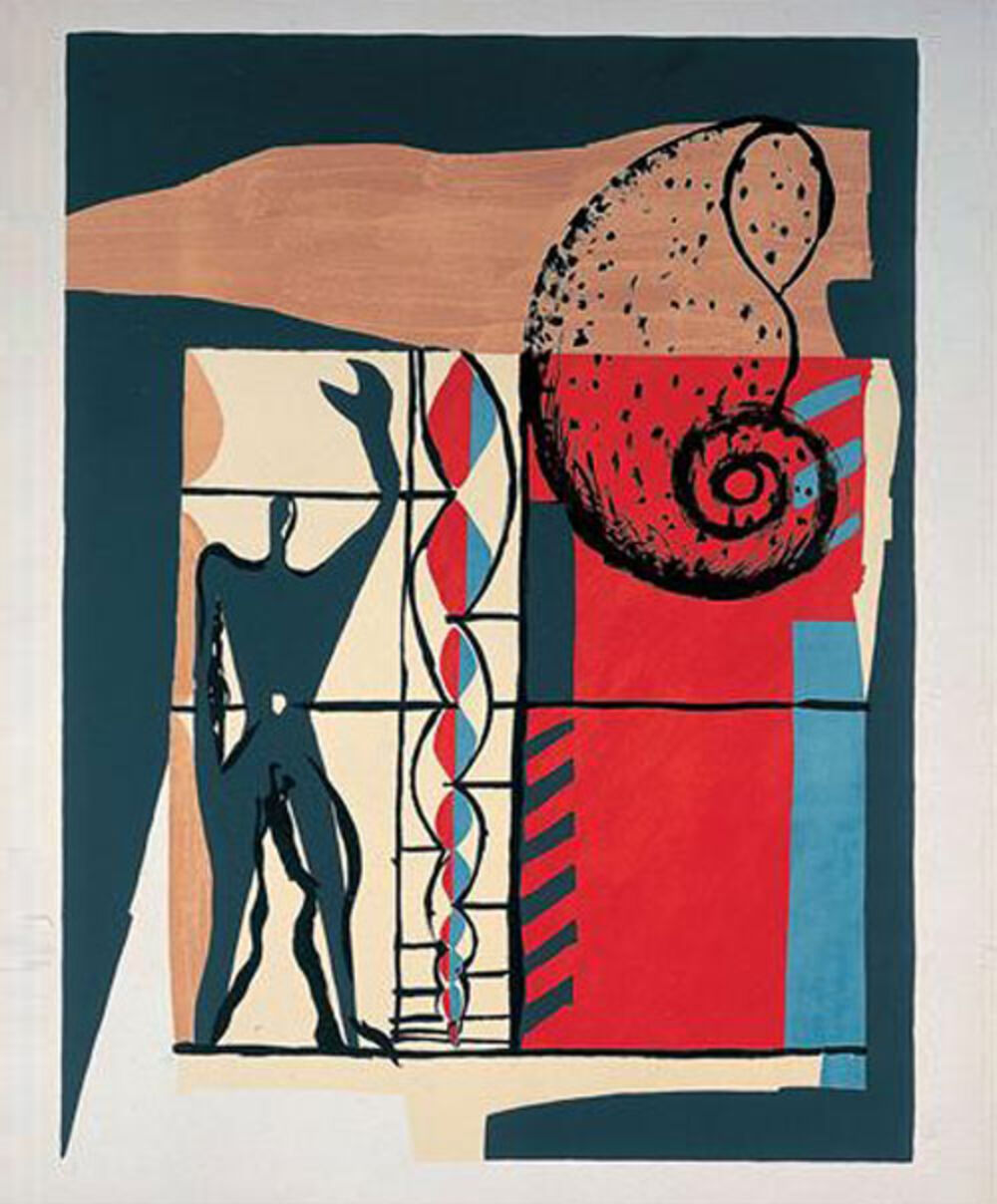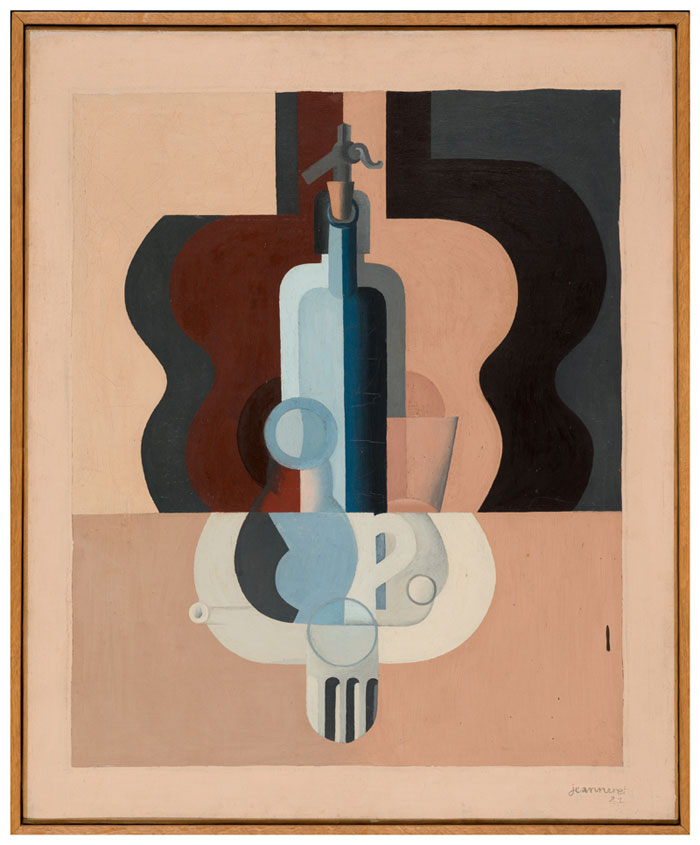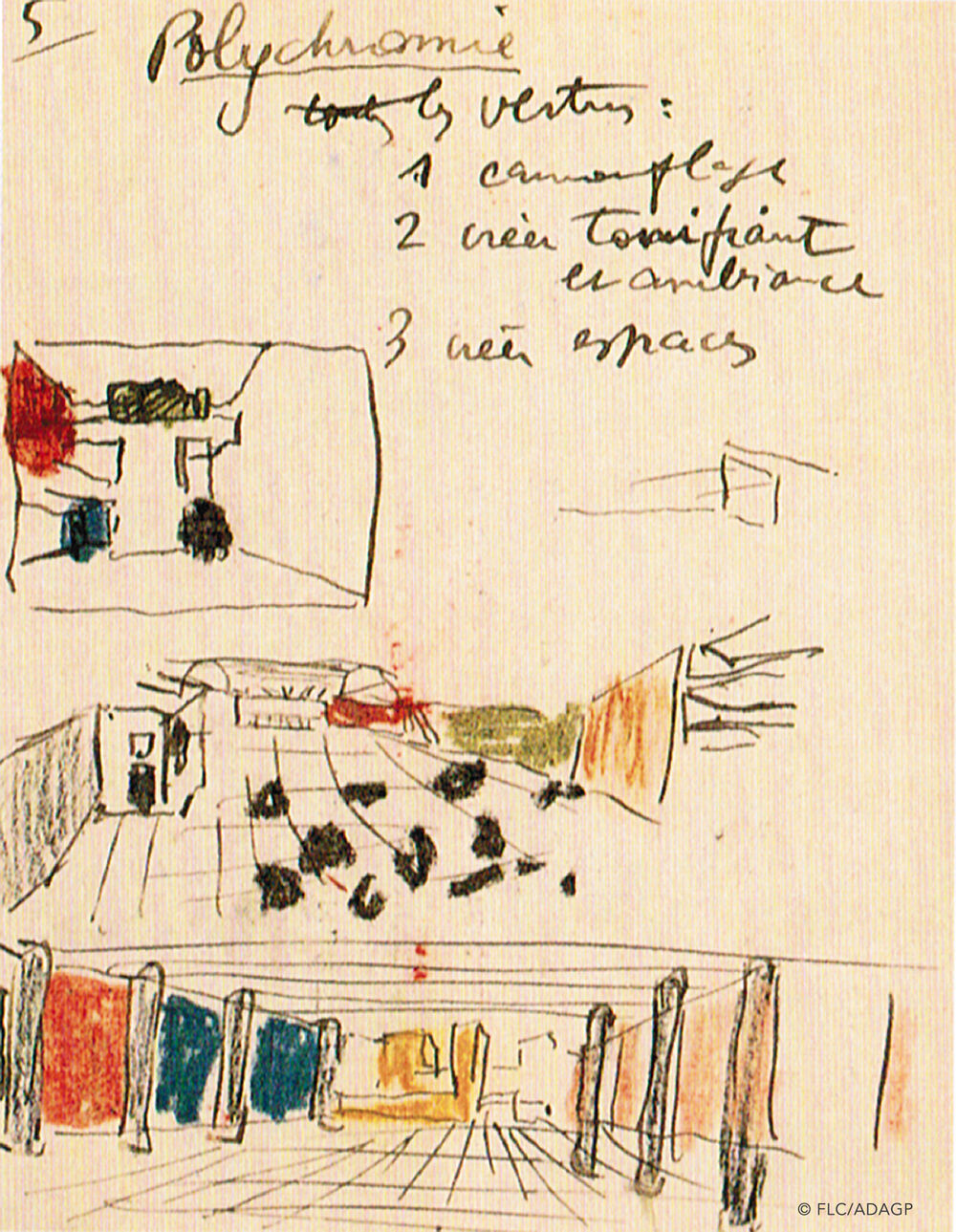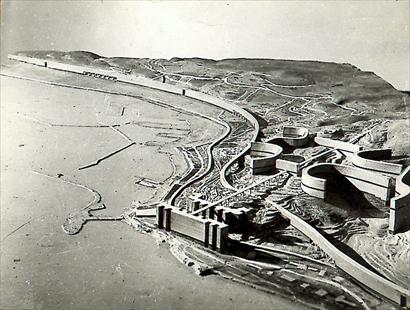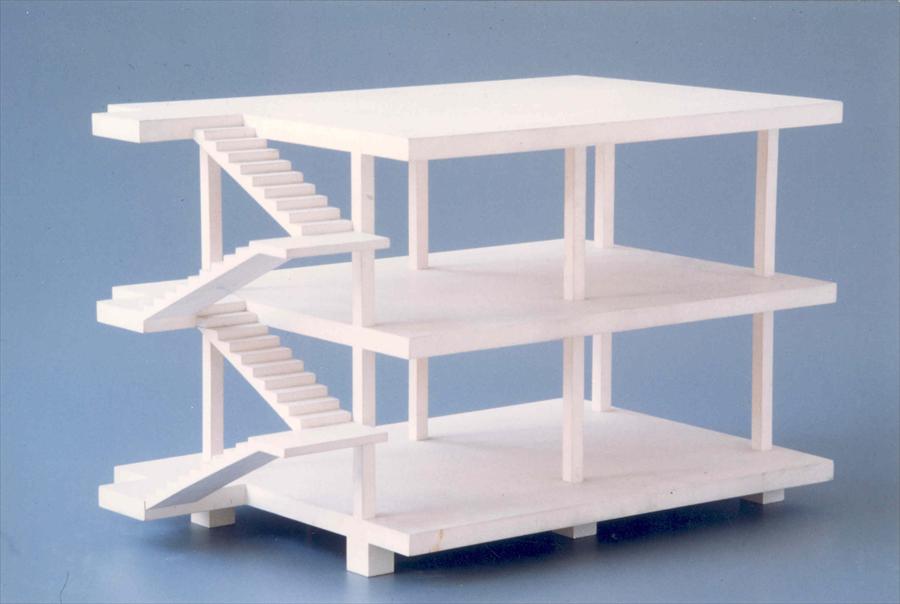Le Corbusier – A Unique Personality
Le Corbusier (Charles-Édouard Jeanneret) is considered as the most important architect of the modern age. He shaped the perceptions of modern architecture and of modernity itself.
When one looks at Le Corbusier's life's work one can only be astonished at its abundance. Le Corbusier built many groundbreaking buildings around the world and drew up numerous important urban development plans.
He created impressive works of art – with paintings, sculptures, drawings and collages, enamels, tapestries as well as engravings. And he developed timeless furniture icons. Incredibly ahead of time. Based on his incomparable experiences, Le Corbusier developed – as a masterpiece – an eternally valid theory of colour: the Architectural Polychromy. Nowadays the Fondation Le Corbusier in Paris manages the life's work of Le Corbusier.
Le Corbusier's Architecture
Le Corbusier, the great pioneer of Modernism in architecture, has created impressive buildings all over the world – from France to Germany and across India to the United States and South America. The architectural work of Le Corbusier includes designs and buildings from the early 1920s to the mid-1960s.
The architectural work of Le Corbusier is directly linked to the ideas of modernity and embodies a new spirit, an "Esprit Nouveau". Some of Le Corbusier's unique buildings aim to standardise architecture, and others are prototypes or bring together many different concepts of that time while having the future in mind.
17 different projects of the Swiss-French architect Le Corbusier were included in the UNESCO World Heritage List of internationally renowned architectural sites in 2016.
Here is a list of all the works and projects of Le Corbusier:
- Cabanon (UNESCO)
- Chandigarh (UNESCO)
- Cité Frugès (UNESCO)
- Curutchet House (UNESCO)
- Saint-Dié Factory (UNESCO)
- Firminy (UNESCO)
- House Guiette (UNESCO)
- Immeuble Clarté Genf (UNESCO)
- La Tourette (UNESCO)|
- Maisons La Roche et Jeanneret (UNESCO)
- Molitor House (UNESCO)
- Ronchamp (UNESCO)
- Taito-Ku National Museum (UNESCO)
- Unité de Marseille (UNESCO)
- Villa le Lac (UNESCO)
- Villa Savoy (UNESCO)
- Weissenhofsiedlung (UNESCO)
- Artists studios
- Atelier Le Corbusier
- Baghdad Gymnasium
- Carpenter Center
- Center for Electronic Calculus, Olivetti
- Château d'eau of Château Chavat
- Citrohan House
- Dom-ino House
- Maison du Brésil
- Maison Errazuriz
- Maison Jaoul
- Monol Houses
- Palace of Ministry
- Palace of the Soviets
- Paul Bowlard House
- Pavillon Esprit Nouveau
- Pavillon Le Corbusier Zürich
- Pavillon Philips
- Pavillon Suisse
- Peyrissac House
- Planeix House
- Sanskar Kendra Museum
- Tsentrosoyuz
- Unité de Berlin
- Unite de Camping
- Unité d'Habitation of Briey en Forêt
- Unité d'Habitation of Meaux
- United Nations headquarters
- Usine Claude et Duval
- Villa Besnus
- Villa Cook
- Villa Fallet
- Villa Jeanneret
- Villa Jeanneret-Perret
- Villa Liptchiz
- Villa Sarabhai
- Villa Schwob
- Villa Shodan
- Villa Stein
- Villa Stotzer
- Villa Ternisien
- 21 Poiret House
Le Modulor
The Modulor is a measurement or proportioning system developed by Le Corbusier to put mankind back into the center of architecture and design. It is a recurrent proud human silhouette, which takes its place in the art and buildings conceived by Le Corbusier.
Based on the golden ratio and the human proportions, it is an attempt of architecture, in the tradition of Vitruvius, to take a human dimension as a mathematical order. The "The Modulor", published by Le Corbusier in 1949, is one of the most important writings in architectural history and theory.
The Modulor is used, for example, in the Unité d'habitation in Marseille and in the Convent La Tourette. Both of these architectural works by Le Corbusier are built according to modulor dimensions.
- Books
- The Modulor
Le Corbusier's Art
Purist as well as abstract art pieces were created in the form of paintings and drawings by Le Corbusier. Wood sculptures – objects that Le Corbusier created in his old age – are also among the artistic works of Charles Jeanneret aka Le Corbusier. In the art of Le Corbusier, in motifs, in forms and colours, icons of architectural works are always being represented.
Many of his letters have paintings and drawings on them. Le Corbusier created a kind of secret and very private diary by painting on paper and canvases. As he grew older, he devoted himself more and more to the study of shapes, images and colours, which increasingly captured his very own style.
A great work is the "open hand", a unique sign of give and take, peace, happiness, also expressing the unity of humanity.
- Art
- Drawings
- Sculptures
- Enamel
- Gobelins tapestreis / Tapestries
- Engravings
Architectural Polychromy / Polychromie Architecturale
Le Corbusier's Architectural Polychromy is a masterpiece. It consists of 63 fascinating colours, divided into 9 colour groups. The shades themselves were created by Le Corbusier in two colour collections in 1931 and 1959. The shades form a masterly and coherent colour system.
In addition, they are colours of nature and harmonious. What makes the Architectural Polychromy unique is that all colours can be freely and impressively combined with one another.
The 63 colours of the Architectural Polychromy are chosen so that the desired colour effects can be made simply, excluding automatically negative effects from the outset. Le Corbusier's Architectural Polychromy is the ideal tool for masterful architectural colour design. Le Corbusier took advantage of the opportunity offered by Salubra (a former wallpaper company) to publish the polychromy as a wallpaper collection.
Urbanism and Architectural Theory
In the course of his work as an architect, Le Corbusier developed a series of architectural principles, which he used as the basis of his designs. The design principles include the following five points by Le Corbusier: Pilotis (pillars), roof garden, open floor plan, long windows and open facades. Basically, Le Corbusier called for a radical change in architecture.
This as a consequence of the developments in technology and the rapid change in living habits between the 19th and the 20th century. For Le Corbusier, it was always clear that the architect had to concentrate on people approached as a large collective group, thinking as a visionary and inventor. He had planned cities, was able to build a city with Chandigarh in India and had always tried his best to express his view of urbanism in real architecture.
Today, the urban ideas of Le Corbusier are the guiding principles of modern urban planning.
- Books
- Chandigarh
- 5 points of architecture
- Architectural Polychromy
Le Corbusier's Furniture
As a young architect, Le Corbusier mainly worked with furniture that had already been designed. It was only after his move to Paris and when he was already a celebrity in the world of architecture that his interest in interiors and interior design grew. Le Corbusier paid particular attention to tables, cabinets and, at last, chrome and leather armchairs.
Modern classics include the cube-shaped LC2 leather chair from 1928 and the 1929 chaise longue LC4, designed by Le Corbusier as a furniture designer. For years, together with Pierre Jeanneret and Charlotte Perriand, a wonderful selection of designer furniture has evolved that is now considered a hallmark of elegance.
The designs include around 340 unique works from design classics to minimalist furniture and furnishings from the post-1930s.



